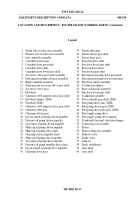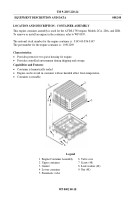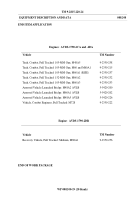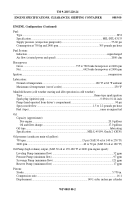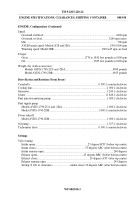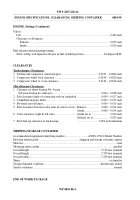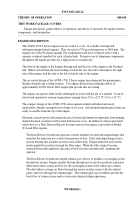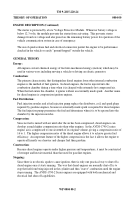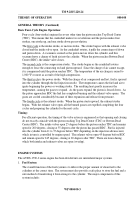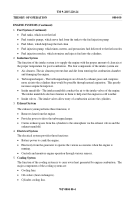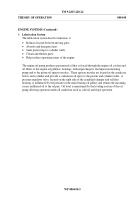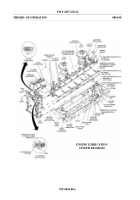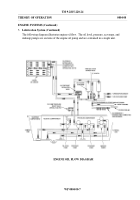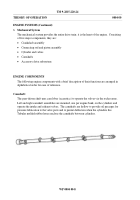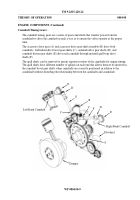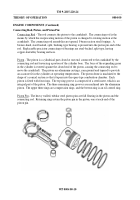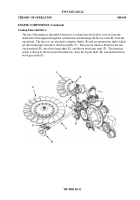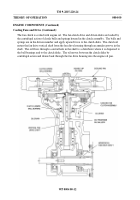TM-9-2815-220-24 - Page 65 of 1563
TM 9-2815-220-24
THEORY OF OPERATION
0004 00
GENERAL THEORY (Continued)
Basic Four-Cycle Engine Operation:
Four-cycle (four-stroke) engines fire every other time the piston reaches Top Dead Center
(TDC).
This means that the crankshaft makes two revolutions and the piston makes four
strokes, one stroke up, and one stroke down per revolution.
The first cycle is the intake stroke, or suction stroke. The stroke begins with the exhaust valve
closed and the intake valve open.
As the crankshaft rotates, it pulls the connecting rod down
and piston down.
A vacuum is created as the piston moves down the cylinder, and this
vacuum draws a charge of fresh air into the cylinder.
When the piston reaches Bottom Dead
Center (BDC), the intake valve closes.
The second cycle is the compression stroke.
The stroke begins as the crankshaft rotates
enough to force the connecting rod and piston upward.
Since the charge of air cannot escape,
it is compressed until the piston reaches TDC.
The temperature of the air charge is raised to
1,000 °F or more as a result of the high compression.
The third cycle is the power stroke.
With the charge of air compressed and hot, fuel is sprayed
into the cylinder through the fuel injection nozzle.
The temperature causes the fuel and air to
ignite beginning the power or working stroke.
The resulting heat greatly increases the
temperature, causing the gases to expand.
As the gases expand, the piston is forced down.
As
the piston approaches BDC the fuel has completed burning and the exhaust valve opens.
The
gases are cooled considerably because of their expansion and release from pressure.
The fourth cycle is the exhaust stroke.
When the piston starts upward, the exhaust stroke
begins.
With the exhaust valve open, all the burned gasses are expelled completing the four
cycles and preparing the cylinder for the next cycle.
Timing:
For efficient operation, the timing of the valve action is engineered so that opening and closing
do not exactly coincide with the piston reaching Top Dead Center (TDC) or Bottom Dead
Center (BDC).
The intake valves open 25 degrees before the piston reaches TDC and remains
open for 260 degrees, closing at 55 degrees after the piston has passed BDC.
Fuel is injected
into the cylinder from 11 to 37 degrees before TDC depending on the injection advance unit,
which in turn is controlled by engine speed.
The exhaust valves open 45 degrees before BDC
and remain open for 245 degrees, closing at 20 degrees after TDC.
There are times during
which both intake and exhaust valves are open (overlap).
ENGINE SYSTEMS
The AVDS-1790-2 series engine has been divided into six interrelated major systems.
1.
Fuel System
The overall function of the fuel system is to deliver the proper amount of clean fuel to the
cylinders at the correct time.
The system must also provide a safe place to store the fuel and a
safe method of transferring it from storage to the cylinder.
The major components of this
system include:
WP 0004 00-3
Back to Top

